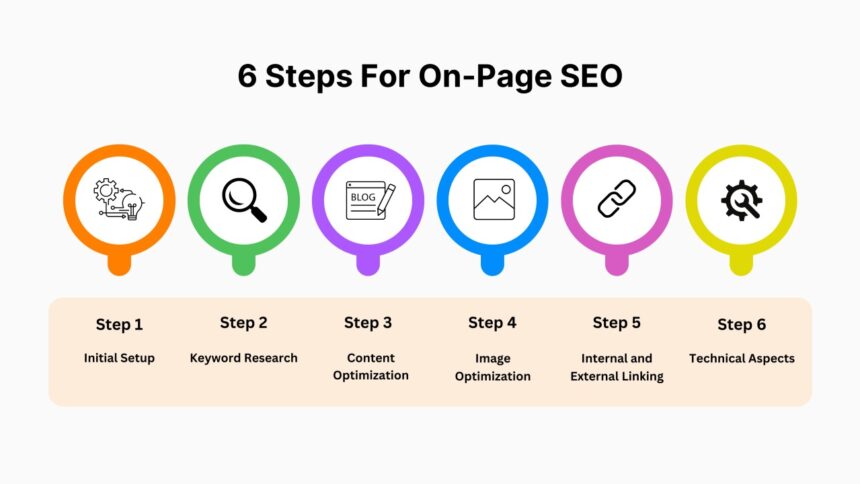What is On-Page SEO?
On-Page SEO refers to the optimization techniques applied directly on a website to improve its search engine rankings. These include optimizing content, HTML, and internal linking to make a page more relevant and valuable to users and search engines.
How to Do On-Page SEO (Step-by-Step Guide)
1. Keyword Research & Optimization
-
Target Relevant Keywords: Use tools like Google Keyword Planner, Ahrefs, or SEMrush.
-
Place Keywords Strategically:
-
Title tag (near the beginning)
-
Meta description
-
URL (short & keyword-rich)
-
H1 & subheadings (H2, H3)
-
First 100 words of content
-
Image alt text
-
-
Avoid Keyword Stuffing (keep it natural).
2. Optimize Title Tags & Meta Descriptions
-
Title Tag:
-
Keep under 60 characters.
-
Include primary keyword.
-
Make it compelling (encourages clicks).
-
-
Meta Description:
-
Keep under 160 characters.
-
Summarize the page & include keywords.
-
3. Improve Content Quality
-
Write Comprehensive Content: Cover the topic in-depth (long-form content often ranks better).
-
Use Readable Formatting:
-
Short paragraphs
-
Bullet points & numbered lists
-
Bold/italic for emphasis
-
-
Add Multimedia: Images, videos, infographics.
-
Update Regularly: Keep content fresh and accurate.
4. Optimize URL Structure
-
Keep URLs short, descriptive, and keyword-rich.
-
Example:
-
❌
yoursite.com/p=123 -
✅
yoursite.com/on-page-seo-guide
-
5. Use Header Tags (H1, H2, H3, etc.)
-
H1: Main heading (only one per page).
-
H2, H3: Subheadings to break content into sections.
-
Include keywords naturally.
6. Optimize Images
-
Compress Images (use TinyPNG or ShortPixel).
-
Use Descriptive File Names (
on-page-seo-guide.jpginstead ofIMG123.jpg). -
Add Alt Text (helps with accessibility & SEO).
7. Internal Linking
-
Link to other relevant pages on your site.
-
Use descriptive anchor text (avoid “click here”).
8. Mobile-Friendly & Fast Loading
-
Use Google’s Mobile-Friendly Test.
-
Improve page speed (compress images, use caching, and a good hosting provider).
9. Schema Markup (Optional but Helpful)
-
Helps search engines understand content better (e.g., FAQs, reviews, breadcrumbs).
10. User Experience (UX) & Engagement
-
Improve readability (clear fonts, good contrast).
-
Reduce bounce rate (make content engaging).
Final Checklist for On-Page SEO
✅ Target the right keywords
✅ Optimize title & meta description
✅ High-quality, well-structured content
✅ SEO-friendly URLs
✅ Proper header tags (H1, H2, H3)
✅ Optimized images (alt text, compressed)
✅ Internal linking strategy
✅ Mobile-friendly & fast-loading
✅ Schema markup (if applicable)
✅ Great UX & engagement
By following these steps, you can significantly improve your on-page SEO and rank higher in search results. 🚀
Would you like help with any specific part?






